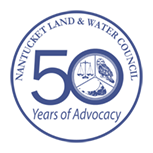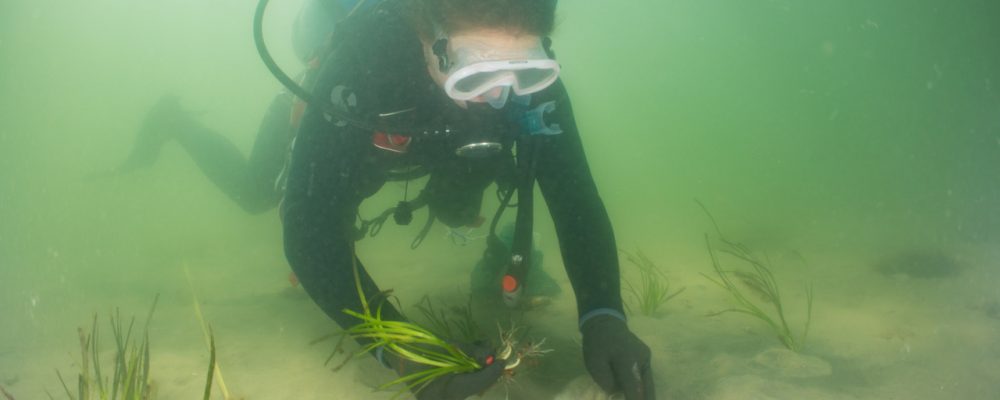From the Cape Cod Times, October 22, 2018:
Nantucket Land & Water Council project aims to transplant eelgrass community
NANTUCKET — Emily Molden and a team of volunteers are diving into Hussey Shoal, a no-anchor zone and healthy eelgrass bed in Nantucket Harbor and removing and transplanting some of the eelgrass shoots there to a barren, half-acre lot in the harbor covered in sand off the second pier in Monomoy.
“We’re essentially gardening underwater,” said Emily Molden, resource ecologist at the Nantucket Land & Water Council said. “We had great support from volunteers and the town.”
But taking eelgrass out of the ground some 20 feet below the surface, moving it and planting it in a new location does present some challenges.
“It’s hard to grow eelgrass where it’s not currently growing,” Molden said. “But this is the perfect opportunity to try it out. There’s usually a reason it’s not growing. We believe this was just buried by sand, and eelgrass can only tolerate so much sand. This must have been a significant sand movement.”
The idea of restoring harbor eelgrass came after a 2015 aerial mapping showed a significant decline in eelgrass beds since their last mapping in 1995. The work is funded through the land council’s Water Fund, which directs donations to a variety of marine and freshwater protection efforts, according to a council press release.
Molden added that Monomoy Beach was a good location to start restoring eelgrass because it has good water quality and because aerial imagery indicated that there were healthy eelgrass beds there just a few years ago.
“Then, some time around 2013, we saw a dramatic decline in eelgrass, most likely because of some shoaling event from that winter,” Molden said. “So much disappeared with the sand movement. It essentially got buried.”
She added that an unhealthy eelgrass habitat has severe implications for the harbor’s population of scallops, other shellfish and finfish.
“There’s a lot of concern over the fate of the scallop population and we understand that it’s directly correlated with the decline of eelgrass,” Molden said.
Molden said the land council had attempted to transplant eelgrass in the harbor in 2010, in an area off of Quaise. But due to an algae growth that smothered the new eelgrass shoots following the planting, the project did not have any success and the eelgrass died off.
But she is hopeful that this new project will yield a flourishing eelgrass bed in the transplanted area for years.
“The Monomoy area where this transplant is taking place has better water quality and lower nutrient levels, in part due to greater flushing that it experiences from its proximity to the jetties and main harbor channel,” she said.
Molden said her team of divers is planning a few more trips to the harbor this fall. Certified divers and people without diving experience alike are welcomed to volunteer in the restoration.
“We are excited to take this critical step in restoring our eelgrass communities and evaluating the relationship between local water quality and eelgrass health,” Molden said.
To support the Nantucket Land & Water Council’s water resource protection and preservation efforts, click here to make a restricted donation to the NLC Water Fund!

